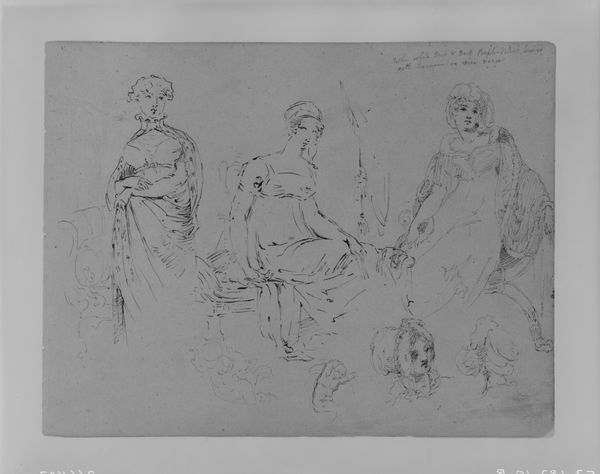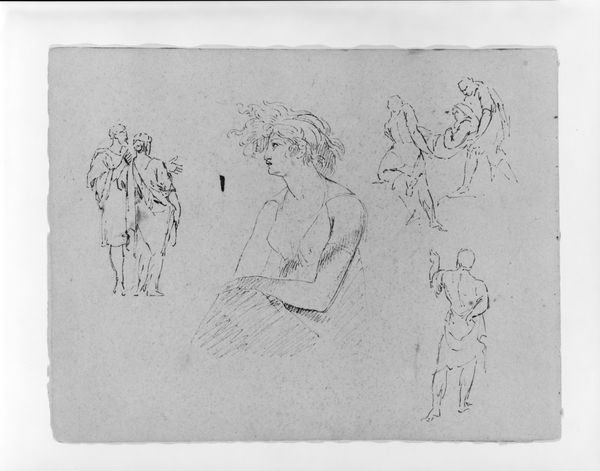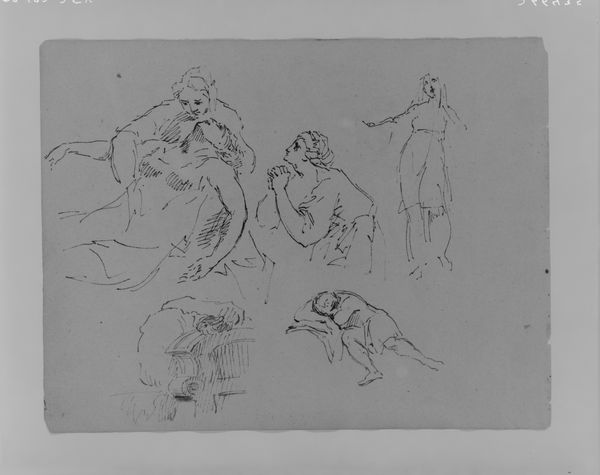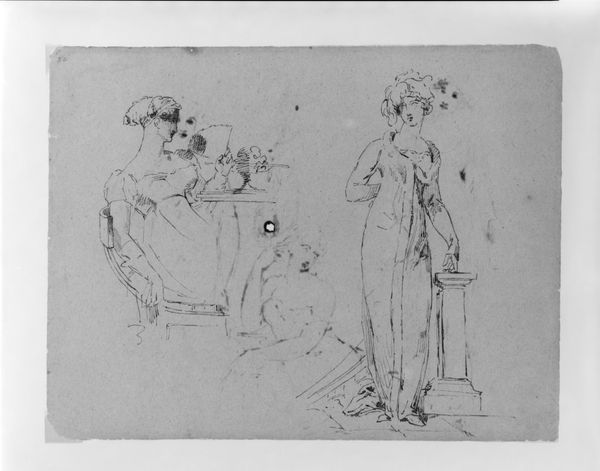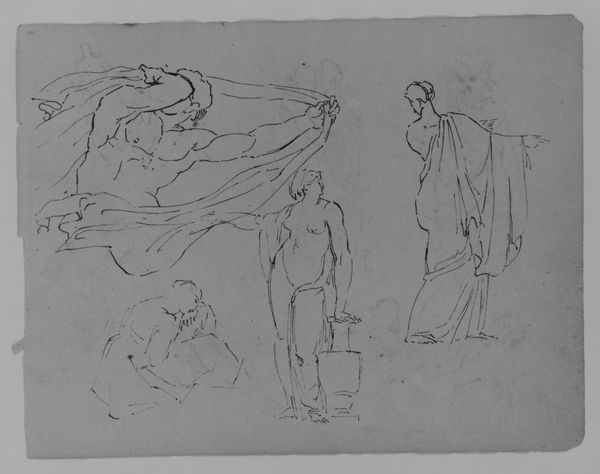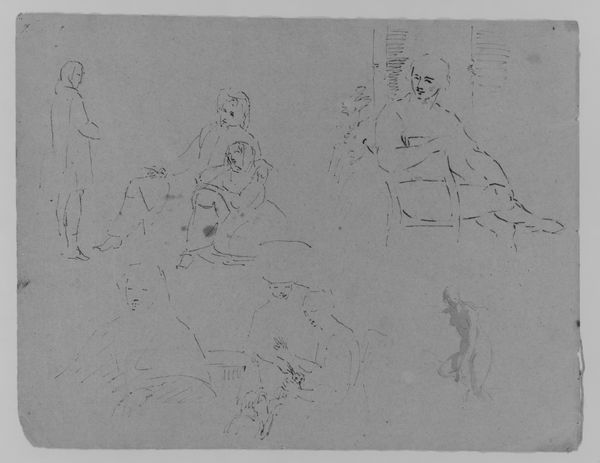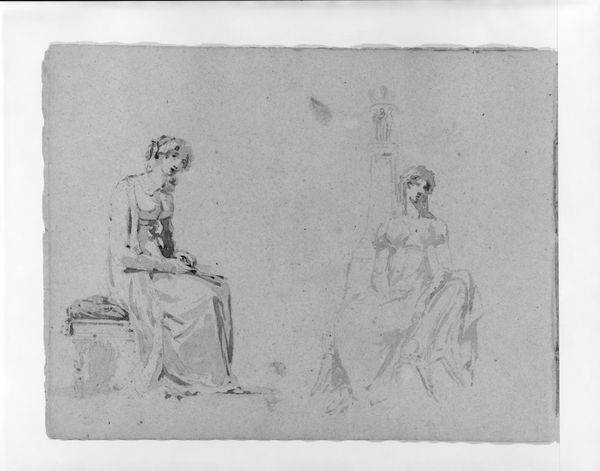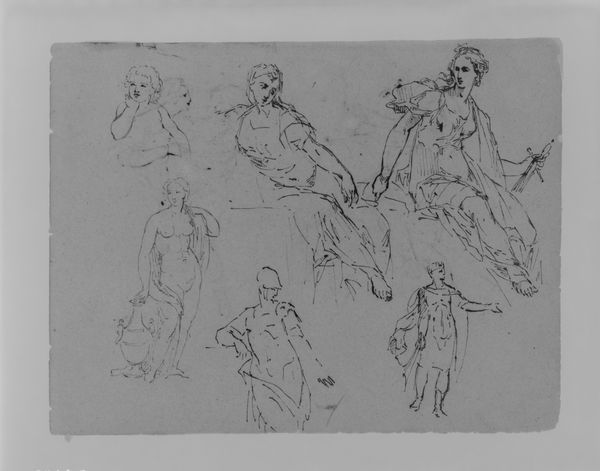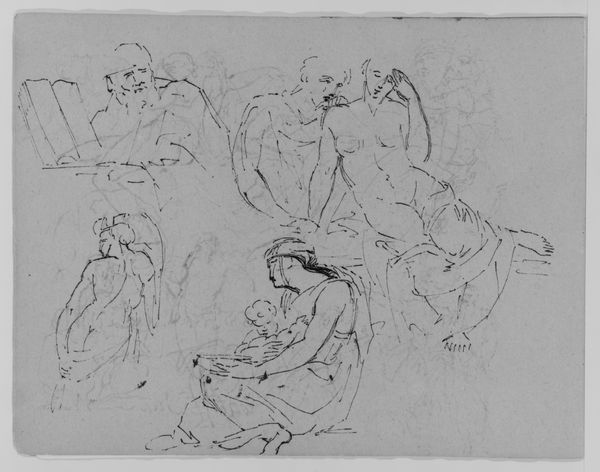
drawing, paper, ink
#
portrait
#
drawing
#
amateur sketch
#
light pencil work
#
pencil sketch
#
incomplete sketchy
#
classical-realism
#
paper
#
ink
#
idea generation sketch
#
sketchwork
#
ink drawing experimentation
#
detailed observational sketch
#
romanticism
#
rough sketch
#
men
#
initial sketch
Dimensions: 9 x 11 1/2 in. (22.9 x 29.2 cm)
Copyright: Public Domain
Curator: Before us is a sketchbook page by Thomas Sully, created between 1810 and 1820, now residing at the Metropolitan Museum of Art. Editor: It feels like a glimpse into a thought process – loose, searching, like he's mapping something out. There is something about the fragility of these sketched forms which makes me connect with its vulnerability. Curator: Indeed. Note Sully’s confident lines, the quick, economical strokes. We see here a fascination with classical form, visible in the drapery and the idealized figures. Observe, too, the arrangement of the figures—each poised with deliberate contrapposto, engaging with implied spatial relationships. Editor: The material aspect is fascinating. You can almost feel the scratch of the pen across the paper. These rapid strokes are really a study of fabric. There is an elegance, however, the figures' gowns give them a higher social status which affects how their work and time were considered in that era. I can imagine Sully using the best quality paper. How does that luxury alter the immediacy, and purpose, of sketching? Curator: The medium itself—ink on paper—is paramount here. It's an ideal method for exploring fleeting impressions and developing preliminary compositional ideas. We can clearly view how he constructs his forms using a series of lines that serve not only to define edges, but also to suggest volume and light. The lightness also carries across the three forms, they are almost translucent. Editor: It certainly reveals the labor behind the “finished” artwork. We often overlook how essential those sketches were as a first stage in art's journey. By focusing on process and materiality, we gain such a valuable understanding of both artistic innovation and wider culture. Curator: Absolutely. Sully's sketch becomes not just an object of aesthetic contemplation but a testament to the artist's creative process. The incompleteness of the forms is a powerful device, leaving us in a state of wonder, questioning where Sully could have taken this initial experimentation. Editor: For me, it is a reminder that "high art" originates through mundane actions: experiments using ink, working, the mundane process. It compels viewers to consider not just artistry, but about craft too. Curator: Well put. It brings us back to the intrinsic visual elegance embedded within this preliminary sketch, capturing the fleeting spirit of classical-era portraiture and the power of simple art. Editor: Indeed. It makes one think about value, and what society assigns it to labor, medium, even purpose.
Comments
No comments
Be the first to comment and join the conversation on the ultimate creative platform.

